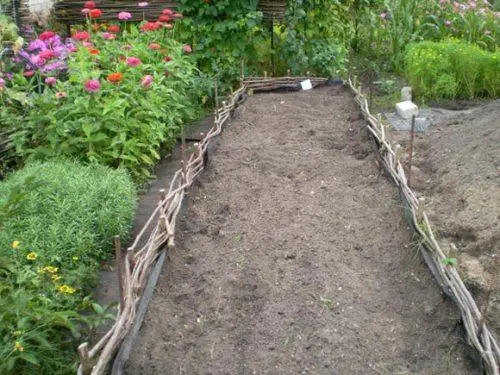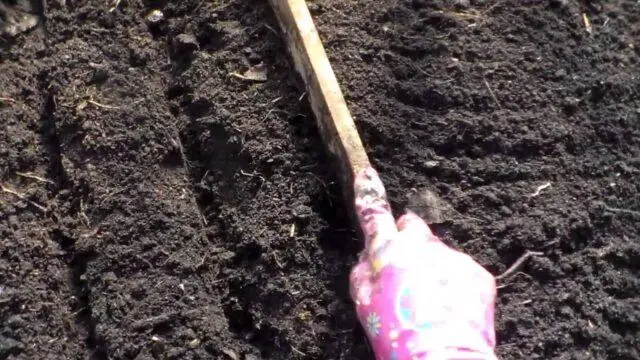Contents
You can grow rose hips from seeds at home without seedlings. Grains are harvested in August, when the fruits are not yet ripe, and immediately sent for stratification in a dark, cool and humid place. They can be sown in open ground before winter, and then mulched with sawdust. In the spring, when shoots appear, regular watering should be ensured. After the appearance of two leaves, they swoop down and continue to water, feed if necessary.
Is it possible to grow rose hips from seeds
Growing rose hips from seeds is carried out in two ways:
- Planting wild rose seeds in open ground in autumn.
- Spring procedure in April-May after stratification.
Growing wild rose from seeds in open ground is possible immediately after harvest in August. If you delay and purchase seed, for example, in early October, it can also be planted in the ground. To do this, make several rows and deepen the seeds by 1-2 cm, mulch and wait for the first shoots next spring. This method is used for growing wild species, as well as winter-hardy varieties.
The second option (spring planting) can be considered universal, since it allows you to grow both wild and cultivated wild rose. Seeds are purchased in autumn or winter and sent for stratification in the refrigerator (at least three months). Then germinate and plant in the ground in the second half of spring, when the soil has time to warm up to + 8–10 degrees ° C.
Terms of sowing seeds
To grow rose hips from seed, you need to plant it on time. Terms depend on the method of cultivation:
- With direct sowing in the ground – immediately after the collection of seeds (end of August – beginning of September).
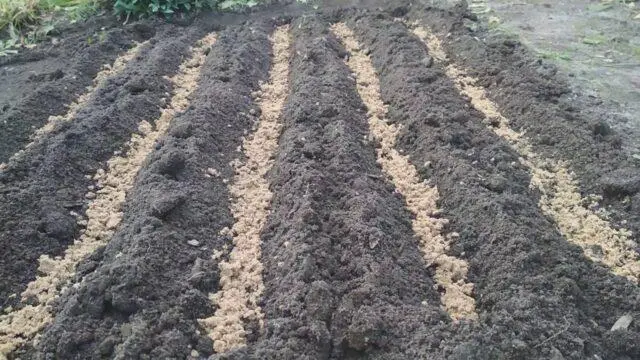
- If you collect material for artificial stratification, at the end of summer it is placed in boxes with soil and taken to a cool place, for example, in a cellar or in a refrigerator.
- In spring, sowing in open ground is carried out in late April or early May. In the south, 1-2 weeks earlier, in Siberia and the Far East – on the contrary, later.
How to grow rose hips from seeds at home
Growing rose hips at home consists of several stages. The seeds of this plant are covered with a very dense peel. To destroy it, it is necessary to withstand the planting material in a humid environment in cool conditions. First, the seed is sent for stratification, then for germination, after which it is planted in the ground.
Seed preparation and stratification
The first stage of breeding rose hips with seeds is stratification, i.e. winter imitation. To do this, they take the seed purchased in the store or collected on their own, and mix it with fertile, light, well-moistened soil. It can be an all-purpose seedling soil or your own mixture of surface soil, black peat, humus and sand (2:1:1:1 ratio).
Instead, you can use wet sand, which is pre-calcined. If you are not sure, you can also disinfect the soil mixture by watering it with a weak solution of potassium permanganate. Other ways are to put it in the freezer for a week or hold it in the oven for 15–20 minutes at a temperature of 130–150 degrees.
Sequencing:
- The seed container is kept at room temperature for several days so that the rosehip seeds have time to swell.
- Then cover it with a tight lid or film. Put in the refrigerator on the bottom shelf with vegetables.
- In this form, the seed for cultivation is kept from one to three months (if necessary, it can be longer), up to planting in seedlings or in open ground.
- During storage, the soil must be monitored and periodically sprayed from a sprayer.
If possible, it is better to arrange a two-stage stratification for growing plants. At the first stage, the planting material is kept in the ground or in the sand for four months (from the end of August to the end of December) at a temperature of 12–15 degrees. On the second – four more months (from the first days of January to the last ten days of April) in the refrigerator at a temperature of + 3–5 ° C. It is under such conditions that maximum germination is observed.
The fruits are planted to a depth of 2 cm, sawdust, straw, needles or other mulch are laid on top.
How to germinate rosehip seeds
Rosehip seeds can be germinated before sowing. This is an optional but desirable step. In order for the grains to smoothly emerge from cool conditions and become active for growth, they are wrapped in a damp cloth and left in a bright room at room temperature (18–20 degrees Celsius). As soon as the sprouts hatch, they can be planted in an open bed (at the end of April) for further cultivation.
How to plant wild rose seeds
For growing plants choose an open, sunny place with fertile soil. The site is cleaned, dug up, if necessary, fertilizer is applied (in a bucket of compost or humus per 1–2 m2). To plant seeds, proceed as follows:
- Carefully level the surface with a rake or other tool.

- Several shallow (up to 3 cm) grooves are formed at a distance of 5 cm from each other.

- Seeds are planted to a depth of 2 cm with an interval of 5 cm.
- For the winter, mulch with sawdust, peat, straw or other mulch (in the case of autumn cultivation).
Aftercare
For successful propagation of wild rose seeds at home, it is necessary to ensure proper care:
- Remove the mulch in early spring.
- They put a frame with a film or agrofiber to ensure a normal microclimate for seedlings.
- Plantings are regularly watered with warm, settled water. The soil should remain slightly moist – its drying out is unacceptable.
- Also, for normal cultivation, you need to dive crops in time. As soon as the seedlings have 2 leaves, they are transferred to a permanent place.
- After the night temperature stops dropping below 10-12 degrees Celsius, the film can be removed.
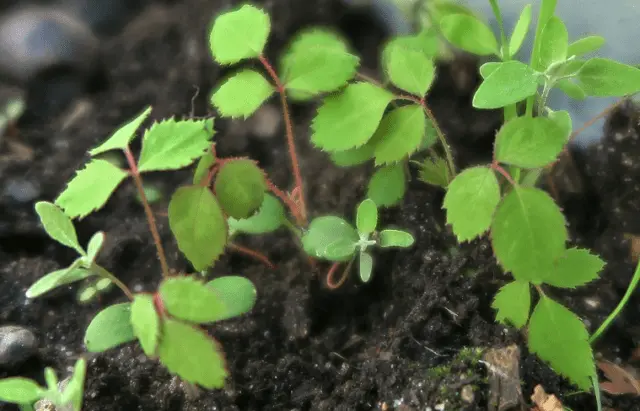
Picking is done in the early stages of cultivation, when each seedling has at least two leaves.
In the first year of cultivation, it is not necessary to give fertilizers (if the soil is fertile enough). If the soil is depleted, you can apply urea or other nitrogen fertilizer, observing the dosage (15–20 g per 10 liters for irrigation 1 m2 crops). Also during the first stage of cultivation it is very important to keep the soil moist. To do this, you need to water regularly, and also use mulch, which will protect the earth from drying out and temperature changes.
For successful cultivation, plantings are mulched with sawdust, humus, straw (layer height 5–10 cm). When the bushes grow up, they can be wrapped with agrofiber for the winter and pour dry leaves inside.
When and how to collect seeds for sowing
To grow a rosehip bush, it is important to know the timing and rules for collecting rosehip seeds. The material must be harvested from unripe berries – as soon as they begin to turn red. Dates may vary depending on the characteristics of the variety and the climate of the region. In some cases, this is the end of July or the beginning of August, in others – the last days of summer.
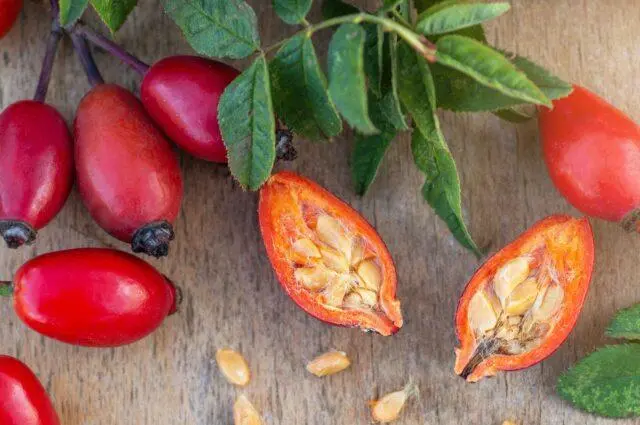
Seeds for cultivation are collected from those fruits that have just begun to ripen.
All grains must be thoroughly washed and cleaned of pulp. Then they are laid in one layer in a ventilated room and dried for several days. Grains can be sent for stratification for subsequent planting in the spring or sown in a garden bed for wintering in natural conditions.
Grains are immediately planted in fertile, light soil or in calcined sand: otherwise, they may not germinate next spring. Those. The sooner you start stratification, the better.
Conclusion
It is quite possible to grow rose hips from seeds. For stratification, a cellar or an ordinary refrigerator is suitable. The process takes three to six months. Therefore, cultivation must be planned in advance: they begin to prepare the seeds as early as August. It is better to purchase seed in a store, this will guarantee good germination and compliance of the culture with the declared characteristics.











